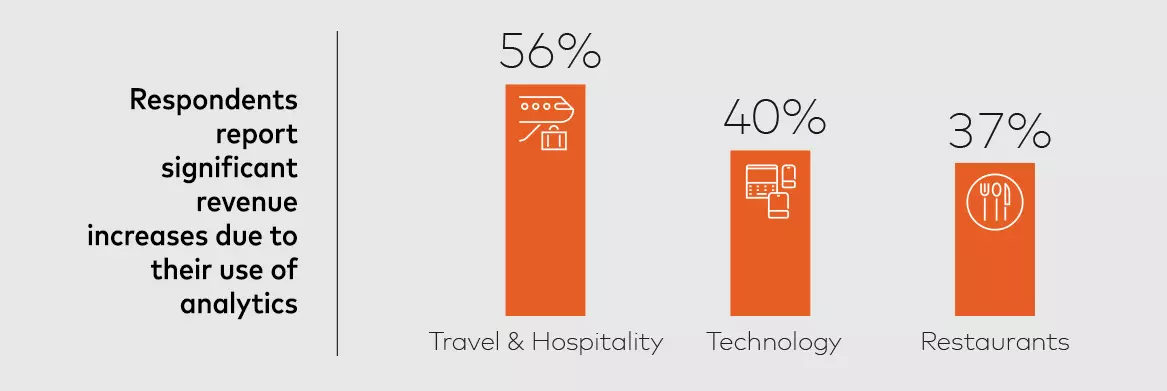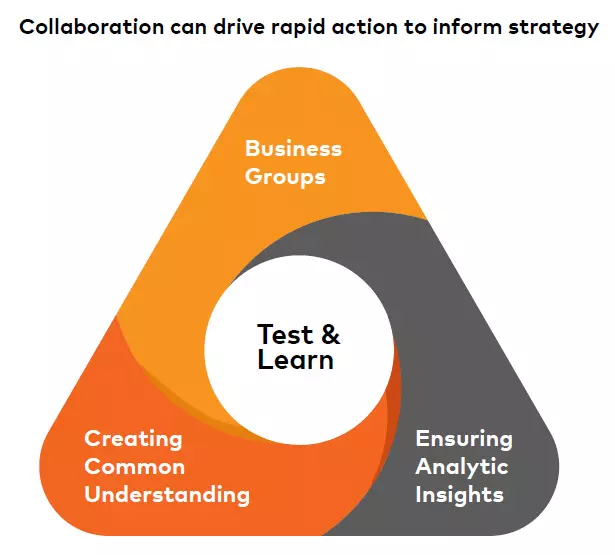Analytics are vital to organizations’ long-term business success and the more value you can get from your data, the sharper your competitive edge
For years, organizations around the world have spent big money on their analytic capabilities – and according to a recent report, many of these organizations indicate their analytics investments are not driving business value to the extent that they should. Analytics are vital to organizations’ long-term business success and the more value you can get from your data, the sharper your competitive edge.
In fact, this recent Mastercard-sponsored report from Harvard Business Review Analytic Services reveals that less than one fifth (18%) of executives and managers surveyed across a wide range of industries feel that their organizations are getting a significant return on their investment in analytics.
How is this possible, given that analytics are top-ofmind now more than ever for decision-makers? And what can we do to change this dynamic?
Having analytics capabilities is clearly not the same as using them effectively. Executives across all industries cite a range of issues reducing the effectiveness of analytics in their organizations. For example, 37% cited the inability to access the necessary data as a major roadblock. Another core challenge is the lack of effective and standardized processes for generating analytics, which 40% of respondents named as a significant issue. The lack of collaboration and clear communication between business and technical staff was another consistent theme that came through in the survey.
As we dig into industry-specific findings – with respondents across sectors including retail, hospitality and travel, restaurants, technology, and energy, utilities and telco – we see similar challenges, as well as evidence of analytics driving business value. 56% of travel and hospitality, 37% of technology and 40% of restaurant respondents report significant revenue increases due to their use of analytics. But there is still room for improvement, value that could be realized if decision-makers can unleash the full potential of their analytics investments.
As was apparent across industries, the inability to access relevant data is a prime roadblock, with technology and hospitality and travel respondents rating that challenge particularly highly (48% and 56% respectively). Clearly, what is needed is a more holistic view of their customer journey across all of their channels. By achieving this 360-degree view, organizations across industries will be able to unlock greater insights and better serve customers.
How can organizations increase analytics ROI?
First, data needs to be understood by and available to all decision-makers for it to be truly useful throughout an organization. Using common, user-friendly platforms that don’t require a Ph.D. in statistics can empower decision-makers to interpret and effectively apply insights to critical business decisions. Without democratizing data access, it’s unrealistic to expect analytics to be widely leveraged throughout a company. Data access must be standardized to provide teams with the insights they need to conduct analyses and inform decision making in real-time.
Further, 29% of survey respondents reported collaboration between business and technical staff as a roadblock to analytics success. Institutionalizing these platforms and processes makes them part of decision-making practices and helps drive collaboration. By adopting a consistent approach, organizations can focus on insights and action, rather than debating varying methodologies. Indeed, a high degree of collaboration was reported by 80% of companies that claimed to be highly successful in driving analytics ROI.
The report shows that one organization that has taken these lessons to heart is Singapore Airlines. Commitment to analytical insight is a major focus for the organization. By implementing a standardized test-and-learn process and discipline, Singapore Airlines is able to quantify its return on analytics investments.
As an example, Campbell Wilson, senior vice president of sales and marketing at Singapore Airlines, cites a “test-and-learn” experiment they ran, which revealed that the availability of one-way fares does not necessarily cannibalize round-trip revenue, sending millions of dollars to the bottom line. This approach can enable organizations across industries to run business experiments to evaluate ideas with a small number of locations (or flights) or customer segments in order to measure impact.
Singapore Airlines is now working to get this “testand- learn” approach into the DNA of all of their business divisions. Through such efforts, organizations can establish a common analytics language, facilitating greater collaboration between business groups, creating common understanding and ensuring analytic insights can drive rapid action to inform strategy.
This example, among others, emphasizes the need for alignment between teams and the institutionalization of consistent methodology to derive maximum value from analytics. Report findings show that 41% of respondents cite competing results produced by conducting analytics in siloes as a major roadblock to analytics ROI, highlighting the importance of standardized data access and user-friendly platforms. With analytics becoming increasingly commonplace, redefining your analytics programs to unlock true, measurable value is essential to developing and maintaining your competitive edge.
Greg Ulrich Vertical Innovation and Strategies |
Subscribe to Compendium
Thought leadership and insights on today’s industry trends and innovations











